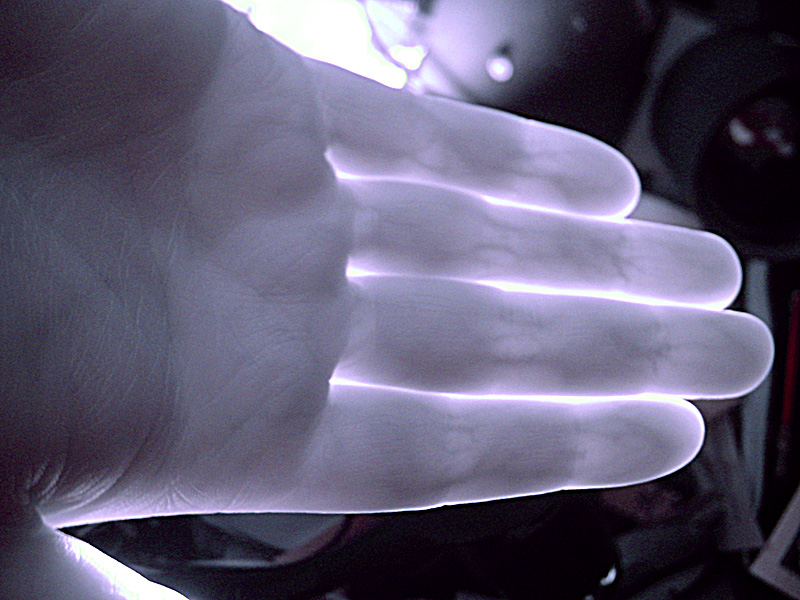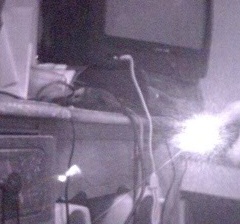Obviously, when starting out the topic of what common cybernetic additions are/will be and what they can/will be able to do, I should start with prosthetics's, since they are probably what most people are the most familiar with. These functions aren't really what I want to focus on, but they are worth mentioning. Briefly. But don't get me wrong, I think restoring a once lost bodily function is great, but it's not the focus of this blog.
So here we go. Right now, as mentioned in previous posts, we are scratching the surface of technology to restore lost body parts, mostly limbs and organs, and restoring a couple of human senses, sight and sound. These will come back into discussion, but not as strictly medical devices. More like, upgrades, for your body.
More like, upgrades, for your body.
So we already know that our limbs can be replaced with robotic ones. So can some organs. Obviously, if we had a fully cybernetic body, we wouldn't need organs. And if all, or most, of our skeleton were replaced with a metallic chassis, and our muscles replaced with powerful servos or hydraulics or pneumatics, then it would be possible to have our robotic limbs capable of exerting much more strength then we could as normal humans. Cool.
So here we go. Right now, as mentioned in previous posts, we are scratching the surface of technology to restore lost body parts, mostly limbs and organs, and restoring a couple of human senses, sight and sound. These will come back into discussion, but not as strictly medical devices.
 More like, upgrades, for your body.
More like, upgrades, for your body.So we already know that our limbs can be replaced with robotic ones. So can some organs. Obviously, if we had a fully cybernetic body, we wouldn't need organs. And if all, or most, of our skeleton were replaced with a metallic chassis, and our muscles replaced with powerful servos or hydraulics or pneumatics, then it would be possible to have our robotic limbs capable of exerting much more strength then we could as normal humans. Cool.
And I already mentioned some people who have had their sight or hearing repaired or replaced with electronic devices. Right now, the technology is far from perfect, but it's getting better. So now, in order to see into the future, we'll have to use our imaginations a little.
Lets start with vision, since its augmentation is one of my favorite topics. If we can have a device that transmits visual signals to our eyes or brains, and these devices are supposed to recreate actual sight (I.E. visible light spectrum), then why not include Infrared? Most digital cameras use one of two special sensors called Complimentary Metal Oxide Semi-Conductor, or more commonly, Charge Coupled Device. Both sensors, especially the CCD, pick up a portion of
 the infrared spectrum called Near Infrared, or NIR. In fact, these sensors are so good at it, camera manufacturers have to include special filters that block out infrared light in order to prevent blurry or washed out images. So it is not a far stretch of the imagination to assume that these infrared images could also be fed to a user's brain, after they are converted into an image our brains can handle, of course.
the infrared spectrum called Near Infrared, or NIR. In fact, these sensors are so good at it, camera manufacturers have to include special filters that block out infrared light in order to prevent blurry or washed out images. So it is not a far stretch of the imagination to assume that these infrared images could also be fed to a user's brain, after they are converted into an image our brains can handle, of course.The Near Infrared spectrum is the easiest to sense, since it is adjacent to the visible spectrum. NIR light behaves almost exactly the same as visible light, only invisible. If we were to have our vision modified to include NIR, and we had some source of infrared illumination, we could see in the dark. But not only would we be able to see perfectly in the dark, but only those who also could see NIR would be able to see the IR illuminator we would be using. It can also be used as a sort of X-Ray vision, allowing medical users to locate veins for IV insertion, and for law enforcement to detect concealed weapons. (And perverts to detect concealed boobies!)




Adjacent to Near Infrared in the electromagnetic spectrum are Medium and Far Infrared. Together, these two bands are known as the Thermal range. This type of infrared radiation operates very differently than Near Infrared. Thermal infrared, just like Near Infrared, is heat. Thermal vision is better for detecting hot objects because of the way Thermal Infrared behaves.
Thermal Infrared has some advantages and disadvantages to Near Infrared. NIR imaging devices can be only a few cubic inches, and can have a lens that is literally the size of a pin hole. (remember that as technology improves, it gets smaller). Thermal imaging devices, on the other had, are much larger and heavier. But the main advantage over NIR, is that Thermal is not affected by things like smoke, fog, or clouds. One adaptation of using Thermal Vision is Forward Looking Infrared, or FLIR. NIR vision in a smoke filled room is useless, but FLIR cuts right through the smoke, making the user see the room and its contents, not the smoke. And don't worry about having to drive slowly in fog anymore. With FLIR, the fog isn't even there.


Another application of Thermal Infrared is Heat Vision (a.k.a. Thermal Vision). Heat Vision,
 not to see objects, but to detect heat. This type of vision allows users to see how hot something is compared to its surroundings. Heat vision operates on the same segments as FLIR, but with a different outcome. The goal of Heat Vision is to detect an object's or area's temperature compared to its surroundings, You can use this to detect where something has been touched, based on any thermal hand prints or foot prints left on its surface, or what car in a parking lot was recently driven, by detecting the heat coming out of the engine compartment. (FLIR is also a name brand, and is sometimes used to refer to all infrared vision)
not to see objects, but to detect heat. This type of vision allows users to see how hot something is compared to its surroundings. Heat vision operates on the same segments as FLIR, but with a different outcome. The goal of Heat Vision is to detect an object's or area's temperature compared to its surroundings, You can use this to detect where something has been touched, based on any thermal hand prints or foot prints left on its surface, or what car in a parking lot was recently driven, by detecting the heat coming out of the engine compartment. (FLIR is also a name brand, and is sometimes used to refer to all infrared vision)A brief recap: Metallic skeletons and prosthetic limbs and other body parts can give you super human speed, strength, agility, and stamina. Vision and hearing can also be augmented to super human levels. And it can all be controlled with your mind, or voice, or nervous system.

But as cool as these modifications sound, I don't think they are the ones that every one will be running out to buy. Not at first, anyway.
The first commercially available cybernetics will focus on communication, and they will be as revolutionary as the cell phone.
And, I am afraid, here is where I must stop. I began discussing the impact that these communications oriented cybernetics will have, and I realized that I was beginning to touch on my next topic, which deals with how technology changes the very definition of humanity. So, I stopped typing, cut out the last segment of this post, and will put it in my next one.

1 comment:
Awesome blog! I am currently making a youtube video with a few audio excerpts from Michael Tsarion on modern day Cybernetics, i have a youtube channel aswell, http://www.youtube.com/gershtv
Post a Comment